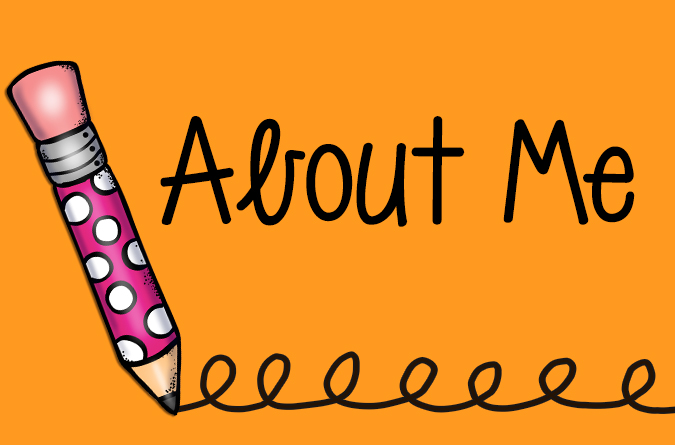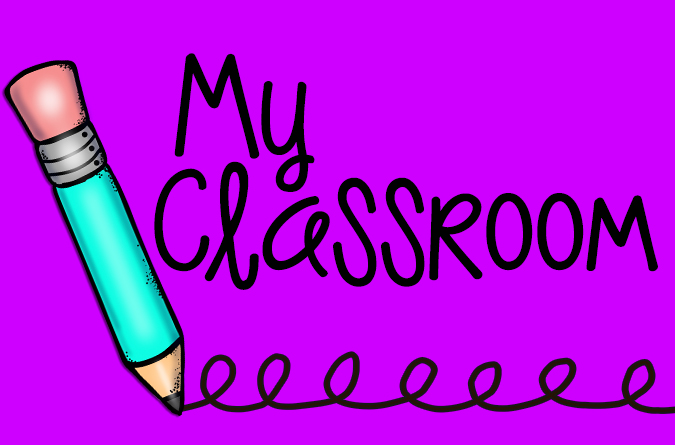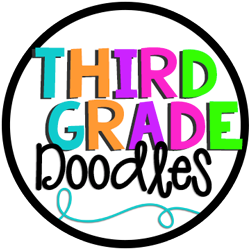Hello friends!! I hope you are well and navigating the pandemic as best as you can. It has certainly been a year for the books!
Chances are, you have been immersed into a world of online teaching at some point this year and it has likely had its ups and downs in terms of success. Teaching writing remotely has been one of the biggest hurdles for many elementary school teachers for a variety of reasons. There are so many things to consider:
- How will students manage their materials from home?
- How will they turn in assignments?
- Will they type their work?
- How will I confer with students and provide opportunities for them to collaborate about their writing?
It is enough to make your head hurt...just a little. It is almost enough to make you want to give up....to not teach writing this year. That makes my heart hurt.
If you follow my blog, you know that I am very passionate about writing. When we teach students how to effectively express themselves in writing we are giving them a voice in the world - a way to express themselves - a way to make a difference and to impact powerful change in their own lives and the lives of others. No small thing, especially now. So, yes, it makes my heart sad to think about NOT teaching writing this year.
My hope is that today's blog post will provide you with some key tools that might make remote writing instruction not just possible - but engaging, motivating and fun!
I've embedded a few really wonderful and helpful FREEBIES - so be on the lookout!
JAMBOARD
Jamboard is a google white board, that you can find it in your google apps "waffle." Jamboard is a simple, user-friendly tool with endless possibilities for the online classroom. Jamboard works like other google apps in that you can create and share boards so that it becomes a perfect way for students to interact and collaborate virtually. You can add the following elements to a Jamboard: stickies, text, shapes, images, and drawing. You can have shared boards for whole-class collaboration or individual boards for each student. Keep in mind that you can add up to 20 frames to a single Jamboard!
Ideas for using Jamboard:
- Class Anchor Charts - all of the anchor charts for your unit could be kept in one Jamboard
- Shared and Interactive Writing - it is the perfect platform for a shared class piece
- Brainstorming Topics - use the sticky notes tool for this - students love to get ideas from one another.
- Pre-writing/Planning (e.g., story mountain, boxes & bullets, webs, etc) - each student could have their own board for planning their piece, or you could assign each student a page in 1-2 class Jamboards which is a handy way for you to have all of your students' work in one place.
- Writing Celebration/Sharing - each student could present their writing onto a page of a class Jamboard, allowing other students to comment.
- Writing warm-ups - such as Quick Writes
VIDEO DISCUSSIONS
Chances are you've used Flipgrid or your school's Learning Management System (LMS) has a video response feature where students can video record themselves speaking. When students are given opportunities to collaborate throughout the writing process, not only is it more engaging for them, but also they write more and write better! When students are at home and unable to talk in-person about their writing, video discussions are next best thing! Kids naturally LOVE to see themselves on camera, so this is highly motivating for them, and these video platforms are very user-friendly for even the youngest students. The "discussion" part of this is very important, so make sure to require students to not only post their own videos but also comment on the posts of their peers.
Ideas for Video Discussion Platforms
- Immersion - students notice and name craft elements from the chosen mentor text.
- Pre-writing - Students share topic ideas and use their organizers to orally "rehearse" their writing. They can talk about how they plan to organize their pieces, as well as some of the details they will include. Pre-writing is a perfect time for students to collaborate with one another, sharing and providing feedback for their ideas.
- Revision - As students begin to draft each part of their writing, they will need opportunities to share their writing and receive feedback. For example, as students are crafting the leads for their pieces, have them draft two different ones and then share them as a video discussion so their peers can provide feedback. This can be repeated as students work on the body of their pieces, trying out different craft and elaboration strategies (specific vocabulary, dialogue, descriptive language, transitions, endings, etc).
- Unit Culmination - having students read or perform their completed pieces on video is a perfect way to celebrate their work!
GOOGLE DOCS AND SLIDES
Hopefully your district or school uses Google Suite!! I wouldn't have been able to survive with out the versatility of google docs and slides during remote instruction. Having the ability to create, share and collaborate on documents is essential when students are working from home, and the possibilities for using docs and slides are endless!
Ideas for using Google Docs and Slides
- Shared documents - students can brainstorm and collaborate on any topic or concept in real-time.
- Google docs are a perfect place for drafting, revision and editing that is ongoing. Google docs is a perfect drafting platform because it makes revising and editing so easy, even allowing students (and teachers) to use the "history" of the document to track their changes.
- Posting photos of handwritten work - if students are not able to type their work, they can write on paper or in a notebook and then take a photo using google slides. They simple click "insert", "image", then select the camera option. They hold up their writing, snap the photo using their webcam and then click "insert" again and it places the photo into the slide! Voila! Typing is far easier and better for readability, but if you've got no other options, this works!
- Create editable writing assignments by inserting an image into the background of a google slide and place text boxes in the slide for students to type their responses. HERE is a quick video tutorial! I used this method to create a digital notebook for our narrative writing unit (FREEBIE ALERT!)
DIGITAL WRITER'S NOTEBOOKS
Digital writing notebooks are almost a necessity for remote writing instruction. But what is a DIGITAL NOTEBOOK? A digital notebook is really just using Google Slides or Docs as a place for students to collect their writing work. Since these tools are collaborative, students can share their doc with you, providing a perfect way for you to see what your students are doing with their writing in real-time and provide timely feedback.
The digital notebook can also be a place for resources and materials that may be helpful for students as they navigate each writing unit (e.g., graphic organizers, writing checklists, editing resources, anchor charts, topic ideas, etc.). HERE is an example of a digital notebook I created (with Google Slides) for our third grade opinion writing unit (FREEBIE ALERT!).
Ideas for using digital notebooks:
- Create a copy of the entire notebook for each student and add them as a shared collaborator on the document/slides.
- Allow students to add pages to the notebook as needed for planning and drafting.
- Have students add their writing partners as collaborators on the notebook so they can comment on each other's writing and share ideas.
- Create a table of contents for the notebook with links to the each section within the NB.
DIGITAL TEXT
Yes, this post is about writing, but if you've read THIS POST about the "immersion", you know the importance of providing your students with high-quality mentor texts that support their understanding of a text type or genre. Listed below are some of my favorite FREE sources of digital text, where you will be able to find some perfect mentor texts for your next writing unit of study.
LIVE (SYNCHRONOUS) MEETINGS
Sometimes there is no substitute for live collaboration! Some writing mini-lessons are perfectly fine delivered as a video, but some are best done in a live (synchronous) meeting. That being said, I prefer to use my precious live meeting time for small group work and conferring, as well as opportunities for students to ask questions, share ideas and collaborate with one another.
Ideas for Virtual Meetings:
- Strategy groups - bring together small groups of students that may be working on the same skill (writing captivating leads, organization, adding more detail, etc).
- Conferring - schedule time each week to meet with each student individually to support them with their writing. This is especially important when students are doing a lot of their writing work asynchronously at home - one-on-one check-ins will help to keep them on-track!
- Writing partnerships - it is more important than ever to provide opportunities for students to collaborate about their writing. Set up virtual breakout rooms each week where students have time to work with their writing partners.
- Celebrations - set aside time at the end of your writing unit to allow students to read their finished work. This could also be done in breakout rooms to save time.
I hope you enjoyed this post! I would love to hear how you've made remote writing instruction a success! Please leave your comments below.
You might also enjoy this post about Remote Guided Reading!
I've been busy creating digital products just for you! Enjoy shopping my TPT store!
SUBSCRIBE TODAY and receive DIGITAL QUICK WRITES for FREE!!

































No comments
Note: Only a member of this blog may post a comment.